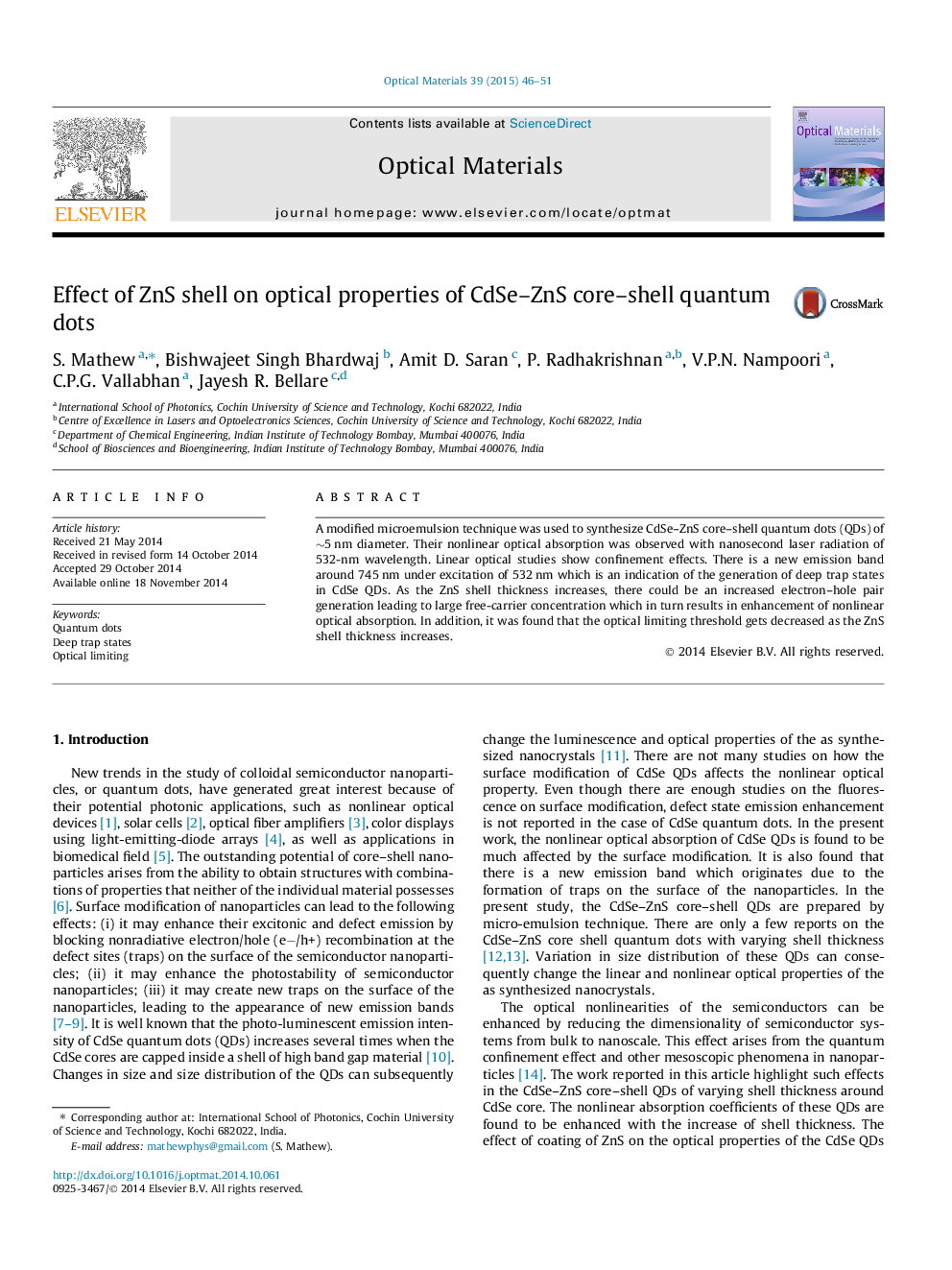| Article ID | Journal | Published Year | Pages | File Type |
|---|---|---|---|---|
| 1494223 | Optical Materials | 2015 | 6 Pages |
•CdSe–ZnS quantum dots (QDs) are prepared through a modified microemulsion technique.•Fluorescence studies of CdSe–ZnS QDs demonstrates the presence of trap states in CdSe–ZnS QDs and the trap state emission gets enhanced with the increase in ZnS shell thickness.•The enhancement of emission from trap states transition due to the increase in thickness of ZnS shell gives a clear indication of distortion occurring in the spherical symmetry of CdSe quantum dots.•Consequently the nonlinear optical absorption of CdSe–ZnS QDs gets enhanced and the optical limiting threshold is decreased as the ZnS shell thickness is increased in respect of CdSe QDs.
A modified microemulsion technique was used to synthesize CdSe–ZnS core–shell quantum dots (QDs) of ∼5 nm diameter. Their nonlinear optical absorption was observed with nanosecond laser radiation of 532-nm wavelength. Linear optical studies show confinement effects. There is a new emission band around 745 nm under excitation of 532 nm which is an indication of the generation of deep trap states in CdSe QDs. As the ZnS shell thickness increases, there could be an increased electron–hole pair generation leading to large free-carrier concentration which in turn results in enhancement of nonlinear optical absorption. In addition, it was found that the optical limiting threshold gets decreased as the ZnS shell thickness increases.
